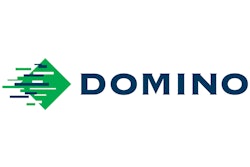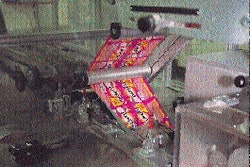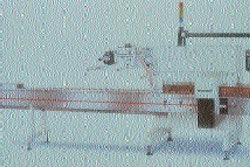Taking a deep breath within the Adams Brands Manufacturing plant of Warner-Lambert Canada fills the lungs and sinuses with the unmistakable aroma only a gum and candy plant can produce. It's a wonderful smell, but the sugar dust that creates it can prove unpleasant for coding equipment.
Prior to increasing the size of its individual gum pieces, and creating a new 8-pack, the Scarborough, Ontario, plant used a pad-stamping process on the gum's paper overwrap. "We used metal characters positioned onto a wheel that actually stamped a code onto the pack," explains Norm Medeiros, manager of manufacturing engineering for Warner-Lambert Canada. "It wasn't a very effective process.
"When we made the changes we wanted to upgrade our coding method," he continues. "We couldn't go with ink-jet printing, though, because our new flow wrappers create a heat seal along a common area that's used to create two side-by-side packs simultaneously. The ink may have melted and caused code smudging. We needed a quality code that would work with our wrapping equipment." Enter a company called Directed Energy, Inc. (Irvine, CA).
In October '94, Domino Amjet (Gurnee, IL) acquired the technology and proprietary rights to a laser coder product line from DEI. DEI manufactured a carbon dioxide laser coder known as Digital Direct Coder that Warner-Lambert Canada opted to use in May '94. "When we purchased our first machines, we had a lot of headaches," admits Tony Lapolla, project engineer/plant automation.
"The sugar dust that is part of our plant's environment caused difficulties on the sensitive circuitry and wiring," he continues. "We're aware that any machine start-up will have its share of difficulties, but we had so many. For example, our laser tubes lost power, due to CO2 leakage. We also had numerous RF-module faults that occurred due to electronic issues and sugar dust. Furthermore, we had to bring a PC to each machine to input code dates for specific products. This was very cumbersome for operators to perform. We needed a network solution."
The overall coding solution, as it turned out, began to take
shape when Domino Amjet, maker of ink-jet coding equipment, purchased DEI. The acquisition moves the vendor into what has become a growing, and competitive market.
When Domino Amjet took over, "it began to solve a lot of the problems that DEI would have eventually gotten to," says Lapolla. "Right away they found a leakage in the laser tubes, and corrected it. As we resolved our problems, we began to add more coders. We currently run eight units, all installed on the Klockner Ho/oonsel Tevopharm flow wrapping machines."
How they work
Each coder used by Warner-Lambert Canada uses seven identical laser tube assemblies that are arrayed to provide a dot-matrix character format. The entire process is electronic, using computer software. No mask or electro-mechanical scanning hardware is required. And since the CO2 is sealed, the tubes last for years.
The lasers used by Warner-Lambert Canada are twin-line lasers. This means the laser marks two dates, as opposed to one. At the end of each laser head assembly are two mirrors; one is a stationary mirror. The other is mounted to the shaft of a motor. The second mirror rotates 21° from one point to the next. As the printed gum wrap unwinds from the flow wrapper, the rotating mirror is positioned at its first point and ready to mark the first date. At this point, the laser pulses on and off to generate the appropriate code. As the web continues to move, the mirror is rotated 21° to the second position where the laser again pulses on and off to complete the second code. The end result is identical codes for the images printed opposite one another on the web to allow two-up filling and sealing (see related story).
The process has been improved considerably since Warner-Lambert Canada first began laser coding. "We used to use a photoeye to pick up a registration mark for each pack to initiate the coding process," Lapolla notes. "But we had problems with the package colors and web movement, so the process was inconsistent. Also, the photoeye remained in a fixed position, which could be problematic for purposes of shifting the position of the date on the web. Instead, we hooked up the input signal for the laser to an electronic cam. This allowed us to rotate the firing position at 360 degrees so we can adjust to the position of the registration mark and pinpoint the laser's firing."
Lapolla says Warner-Lambert is still fine-tuning the entire process. "We designed software that lets us individually program each coder from a single computer. We still need to develop a better method of cleaning the sugar dust from the mirror on the laser," he admits, "but we're making progress on that by implementing vacuum and air blowing systems on the face of the mirror. The entire system is based on electronics. There's little wear with the lasers, and virtually no clean-up issues compared with our old pad-printing method. And the quality is far beyond anything else we've had. It's exactly what we needed."






























